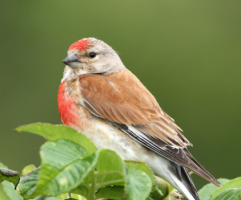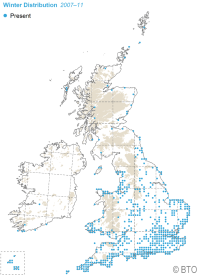After putting up garden feeders (peanuts, mixes seeds and fat ball for variety) and a fat ball on a suitable ground based site for the Blackbirds and ground feeders we have started to get some birds visiting. This has led to me doubting my ID skills. It doesn't help that I have misplaced my ancient Bird Id book ( a hefty A5 brick of European bird species (might include north american species too I can't recall). Is there a good online ID guide?
Also, what do you do with a bird that can look like another? How to choose which is right? In our garden there looked to be a marsh tit and a willow tit. According to my bird book that I could find (not a great one as it is collins paperback) they look remarkably similar and the habitat for both kind of crosses over and is pretty much all around here anyway. So size, colouring and habitat does not help IDing them. I think Marsh Tit is possibly more likely in a garden but we live in a part of the country that is bucking the diversity trend in that it is one of the richest habitat mix and biodiversity is high. As you would expect from a National Landscape!!!
Another looked like a great tit but with an almost pinkish hue to the underbelly. Seriously the birds visiting me are dressing up in each others feathers as they don't match any of my bird guides!!!! Not fully at least.
So far it is not a spectacular list compared to a few years ago. BLue tit, black bird. wood pidgeon, great tit, willow or marsh tit, surprisingly no sparrows (had loads in the summer without feeding). Past years yellow hammer, gold crest (possibly firecrest), wren, thrushes possibly of two types, Plus a few more forest types you don't usually see in gardens but there are so many woods round here of all kinds there can be a lot more variety in gardens where we are. Just not this year.
Does anyone else notice a smaller range of birds visiting their gardens this winter? Also, they are usually here in the morning and as it is heading to darkness like now at 3pm but not in the middle of the day. Anyone notice that too?
And what on earth does "jizz" mean?? I mean in bird watching terms. I read about a bird having the same jizz as another in one of my bird guides bought about 6 years ago.
Also, what do you do with a bird that can look like another? How to choose which is right? In our garden there looked to be a marsh tit and a willow tit. According to my bird book that I could find (not a great one as it is collins paperback) they look remarkably similar and the habitat for both kind of crosses over and is pretty much all around here anyway. So size, colouring and habitat does not help IDing them. I think Marsh Tit is possibly more likely in a garden but we live in a part of the country that is bucking the diversity trend in that it is one of the richest habitat mix and biodiversity is high. As you would expect from a National Landscape!!!
Another looked like a great tit but with an almost pinkish hue to the underbelly. Seriously the birds visiting me are dressing up in each others feathers as they don't match any of my bird guides!!!! Not fully at least.
So far it is not a spectacular list compared to a few years ago. BLue tit, black bird. wood pidgeon, great tit, willow or marsh tit, surprisingly no sparrows (had loads in the summer without feeding). Past years yellow hammer, gold crest (possibly firecrest), wren, thrushes possibly of two types, Plus a few more forest types you don't usually see in gardens but there are so many woods round here of all kinds there can be a lot more variety in gardens where we are. Just not this year.
Does anyone else notice a smaller range of birds visiting their gardens this winter? Also, they are usually here in the morning and as it is heading to darkness like now at 3pm but not in the middle of the day. Anyone notice that too?
And what on earth does "jizz" mean?? I mean in bird watching terms. I read about a bird having the same jizz as another in one of my bird guides bought about 6 years ago.


